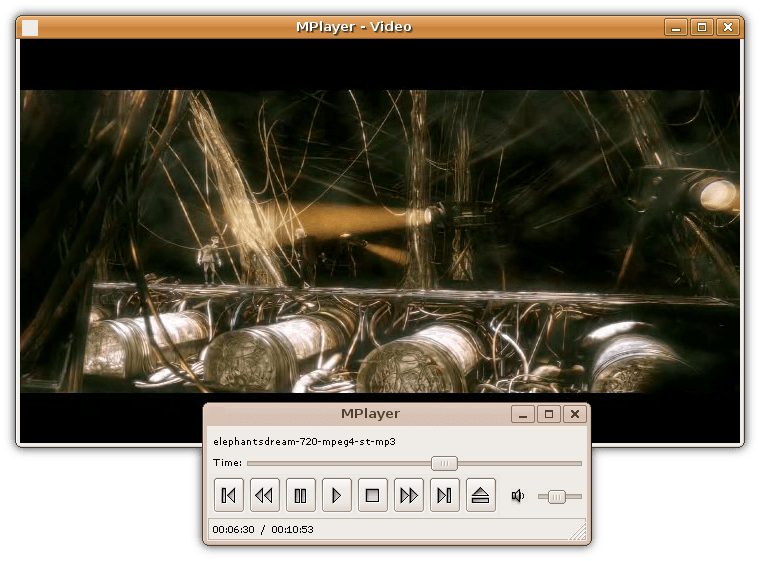|
Volume Logic
Volume Logic was commercial software which added audio enhancement features to media players. Originally released by Octiv Inc. in 2004, it was the first plug-in for Apple's iTunes for Mac and Windows. In April 2005, the Octiv corporation was acquired by Plantronics. Description Volume Logic was available for RealPlayer, Windows Media Player, Winamp and Musicmatch. It was designed to subjectively improve the listening experience by increasing loudness of soft passages, controlling loudness of loud passages without audible distortion, emphasizes loudness of bass separately, for example. It corrected a problem with RealPlayer and the system's wave volume control. Volume Logic disabled RealPlayer's volume control and uses its own. Presets stored settings for the amount of each kind of processing to be applied: automatic gain control, limiting, bass boost, etc. Presets cannot be added. The Volume Logic plug-in incorporated multi-band dynamics processing technology, solving common ... [...More Info...] [...Related Items...] OR: [Wikipedia] [Google] [Baidu] |
Plantronics
Plantronics, Inc. is an American electronics company producing audio communications equipment for business and consumers. Its products support unified communications, mobile use, gaming and music. Plantronics is headquartered in Santa Cruz, California, and most of its products are produced in China and Mexico. On March 18, 2019, Plantronics announced that it would change its name to Poly following its acquisition of Polycom, although it continues to trade on the New York Stock Exchange as Plantronics, Inc. (POLY; listed as PLT until May 24, 2021). On March 28, 2022, HP Inc. announced its intent to acquire Poly for $1.7 billion in cash as it looks to bolster its hybrid work offerings, such as headsets and videoconferencing hardware. Including debt, the deal valued at $3.3 billion and closed in August 2022. History In the early 1960s, airline headsets were so large and cumbersome that many pilots had switched back to the use of handheld microphones for communications. The spee ... [...More Info...] [...Related Items...] OR: [Wikipedia] [Google] [Baidu] |
Microsoft Windows
Windows is a Product lining, product line of Proprietary software, proprietary graphical user interface, graphical operating systems developed and marketed by Microsoft. It is grouped into families and subfamilies that cater to particular sectors of the computing industry – Windows (unqualified) for a consumer or corporate workstation, Windows Server for a Server (computing), server and Windows IoT for an embedded system. Windows is sold as either a consumer retail product or licensed to Original equipment manufacturer, third-party hardware manufacturers who sell products Software bundles, bundled with Windows. The first version of Windows, Windows 1.0, was released on November 20, 1985, as a graphical operating system shell for MS-DOS in response to the growing interest in graphical user interfaces (GUIs). The name "Windows" is a reference to the windowing system in GUIs. The 1990 release of Windows 3.0 catapulted its market success and led to various other product families ... [...More Info...] [...Related Items...] OR: [Wikipedia] [Google] [Baidu] |
Mac OS X
macOS, previously OS X and originally Mac OS X, is a Unix, Unix-based operating system developed and marketed by Apple Inc., Apple since 2001. It is the current operating system for Apple's Mac (computer), Mac computers. Within the market of Desktop computer, desktop and laptop computers, it is the Usage share of operating systems#Desktop and laptop computers, second most widely used desktop OS, after Microsoft Windows and ahead of all Linux distributions, including ChromeOS and SteamOS. , the most recent release of macOS is MacOS Sequoia, macOS 15 Sequoia, the 21st major version of macOS. Mac OS X succeeded classic Mac OS, the primary Mac operating systems, Macintosh operating system from 1984 to 2001. Its underlying architecture came from NeXT's NeXTSTEP, as a result of NeXT#1997–2006: Acquisition by Apple, Apple's acquisition of NeXT, which also brought Steve Jobs back to Apple. The first desktop version, Mac OS X 10.0, was released on March 24, 2001. Mac ... [...More Info...] [...Related Items...] OR: [Wikipedia] [Google] [Baidu] |
Media Player (application Software)
Media player software is a type of application software for playing multimedia computer files like audio and video files. Media players commonly display standard media control icons known from physical devices such as tape recorders and CD players, such as play ( ), pause ( ), fastforward (⏩️), rewind (⏪), and stop ( ) buttons. In addition, they generally have progress bars (or "playback bars"), which are sliders to locate the current position in the duration of the media file. Mainstream operating systems have at least one default media player. For example, Windows comes with Windows Media Player, Microsoft Movies & TV and Groove Music, while macOS comes with QuickTime Player and Music. Linux distributions come with different media players, such as SMPlayer, Amarok, Audacious, Banshee, MPlayer, mpv, Rhythmbox, Totem, VLC media player, and xine. Android comes with YouTube Music for audio and Google Photos for video, a ... [...More Info...] [...Related Items...] OR: [Wikipedia] [Google] [Baidu] |
ITunes
iTunes is a media player, media library, and mobile device management (MDM) utility developed by Apple. It is used to purchase, play, download and organize digital multimedia on personal computers running the macOS and Windows operating systems, and can be used to rip songs from CDs as well as playing content from dynamic, smart playlists. It includes options for sound optimization and wirelessly sharing iTunes libraries. iTunes was announced by Apple CEO Steve Jobs on January 9, 2001. Its original and main focus was music, with a library offering organization and storage of Mac users' music collections. With the 2003 addition of the iTunes Store for purchasing and downloading digital music, and a Windows version of the program, it became an ubiquitous tool for managing music and configuring other features on Apple's line of iPod media players, which extended to the iPhone and iPad upon their introduction. From 2005 on, Apple expanded its core music features with s ... [...More Info...] [...Related Items...] OR: [Wikipedia] [Google] [Baidu] |
RealPlayer
RealPlayer, formerly RealAudio Player, RealOne Player and RealPlayer G2, is a cross-platform media player (software), media player app, developed by RealNetworks. The media player is compatible with numerous container file formats of the multimedia realm, including MP3, MP4, QuickTime File Format, Advanced Systems Format, Windows Media format, and the Proprietary format, proprietary RealAudio and RealVideo formats. RealPlayer is also available for other operating systems; Linux, Unix, Palm OS, Windows Mobile, and Symbian versions have been released. The program is powered by an underlying open-source software, open-source media engine called Helix (multimedia project), Helix. History The first version of RealPlayer was introduced on April 3, 1995 as "RealAudio Player" and was one of the first media players capable of streaming media over the Internet. Then, version 4.01 of RealPlayer was included as a selectable Internet tool in Windows 98's installation package. Subsequent ver ... [...More Info...] [...Related Items...] OR: [Wikipedia] [Google] [Baidu] |


